I tried recreating my Instagram photographs with AI, and the results are... unsettling
No photographers were harmed in the writing of this article
Have you ever done something just for the ‘gram? Baked a cake, gone out in the snow, travelled to a specific destination just because you wanted the beautiful photographs?
Well, good news: you need never do any of that ever again.
In fact, possibly our days of having to do anything at all might be hanging in the balance, if the AI doomsayers are to be believed. And generally I’ve stayed skeptical; surely there’s always a place for the real, personal touch in creativity. Surely the soft, inimitably human skills will remain?
Time to put that to the test.
Nothing uses my ‘soft’ creative skills like photography. Capturing the daily nuances, those little moment that snag my attention, frozen through the filter of my lens.
So I set myself a challenge: just how well could I replicate my own Instagram photography using AI text-to-image tech? On paper it’s the perfect combination of so many of my passions - linguistics, photography, composition and tech - so I should be able to get great results. But can artificial intelligence really compete with a photographer’s eye?
Scroll down and you can make up your own mind on that.
By subscribing to Entre Nous on Substack you are supporting me, my work and the future of creatives online.
If you’re enjoying this free post, you’ll love my paid membership content even more! For around £1.15 a week, I’ll send you exclusive deep-dive posts on all things creative business ans social media, as well as invitations to co-working calls, expert Q&As, drop-in Creative Clinics and a close, connected community space where we all can cheer each other on. Want in?
The Challenge
For this experiment I used the new Beta AI tool in Adobe Express that’s included as part of my Creative Cloud subscription. There are significantly more sophisticated and advanced tools available, including several that are completely free, but for this, I wanted something with zero learning curve.
For the uninitiated, it works like this: You type in a description - similar to what you might add as the ‘alt text’ for any online photo - and then hit return. There are a few other variables you can play with but essentially, that’s it. You just tell it what you want, and then you watch it emerge. Magic. Ish.
I made a few rules for the challenge: I’d do my best to word it right first time, but would allow myself up to 5 tweaks or revisions to perfect the result. The only editing I could do was my usual Instagram processing, so no photoshopping or changing things up.
And just to be super clear, at no point did I upload or share my original photographs with the AI software for this. I just attempted to describe the original shot with words alone. And unlike many of the models out there, the Adobe software only references its own image library (thanks @susanmar for the heads up on this), there’s no way it’s using my actual originals as part of that.
So, without further ado, allow me to introduce you to my new alter insta-ego: Me & AI. (Or AI and Orla, perhaps?)
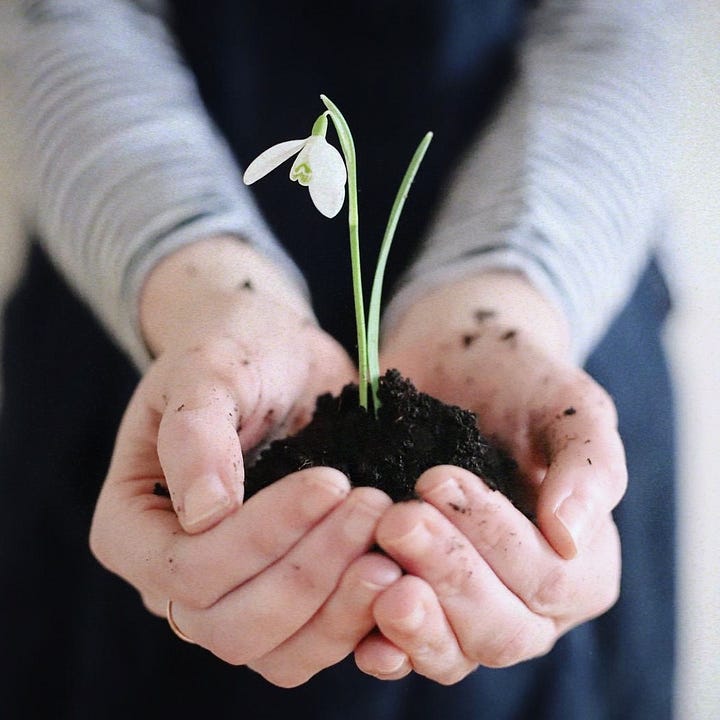

In all of the examples here, the real, original photo is in the left, the AI creation on the right (or real top, AI bottom, if you’re in the mobile app). Yes, you read that correctly. The AI photo above is arguably the most realistic photo of the two - at least on first glance. It’s somehow more like the picture I was aiming to take than the actual photograph. It’s better. AI wins this first round, which I did not expect. It’s an ominous beginning. // AI wins.
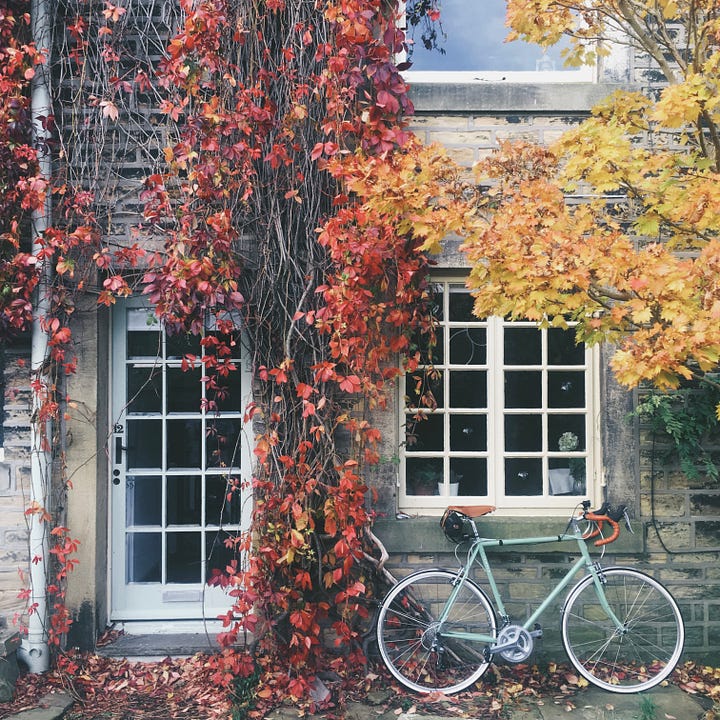
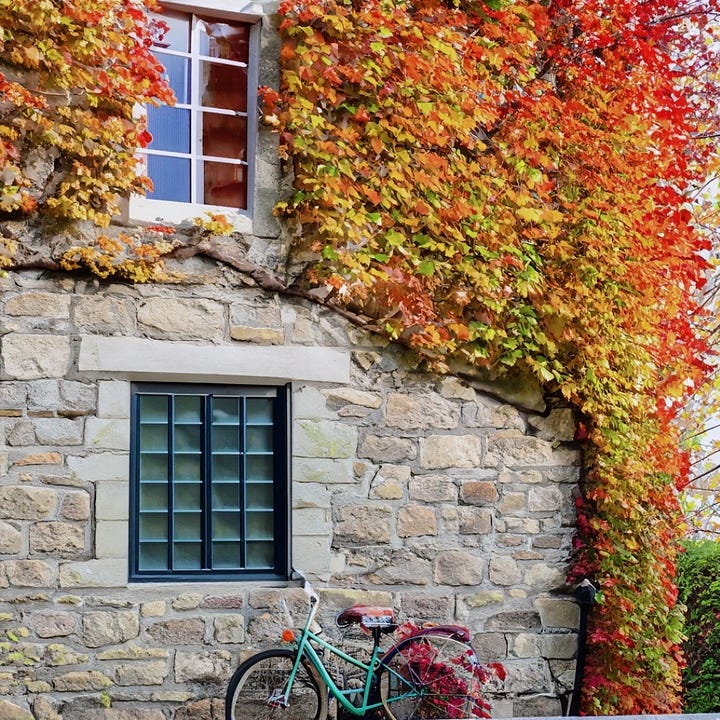
Honestly, I’m a little creeped out by how much this version resembles my actual house. All I typed in was “stone house with paned windows” - I didn’t get any more specific than that.
It loses a few points, though, for cutting off the bottom of the bike, the mismatched windows and the wonky perspective. I think my photo is the better image, overall, in terms of composition and believability. //IRL wins.
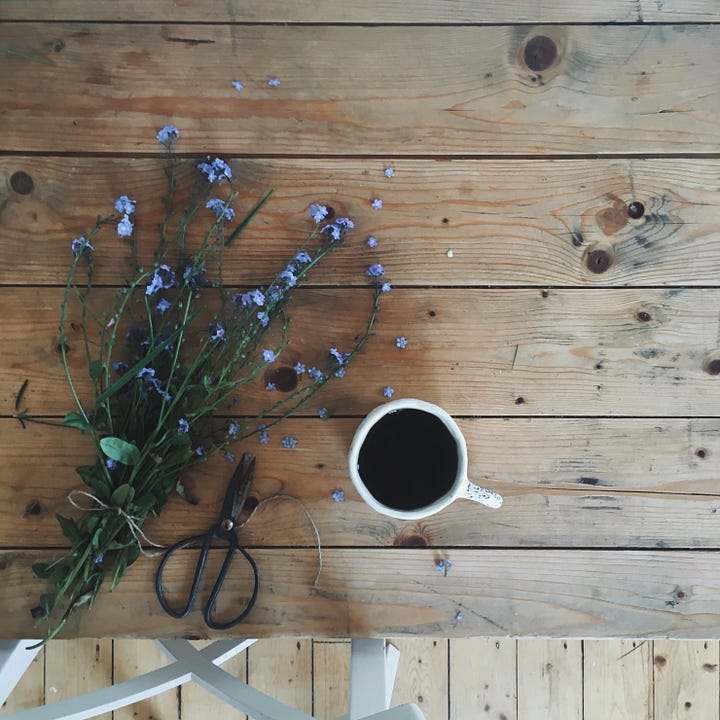

I had a few issues with this one - AI seems to struggle with scissors in a similar way to fingers and kept giving me uncanny looking three-bladed snips. Once I’d weeded those out though, the results were fairly solid. Again, it only really stands up to passing scrutiny - zoom in on the saucer and flowers and you’ll find a few blips. But what is Instagram if not a fleeting visual platform? I think I’d get away with this on there with limited questions. // DRAW.
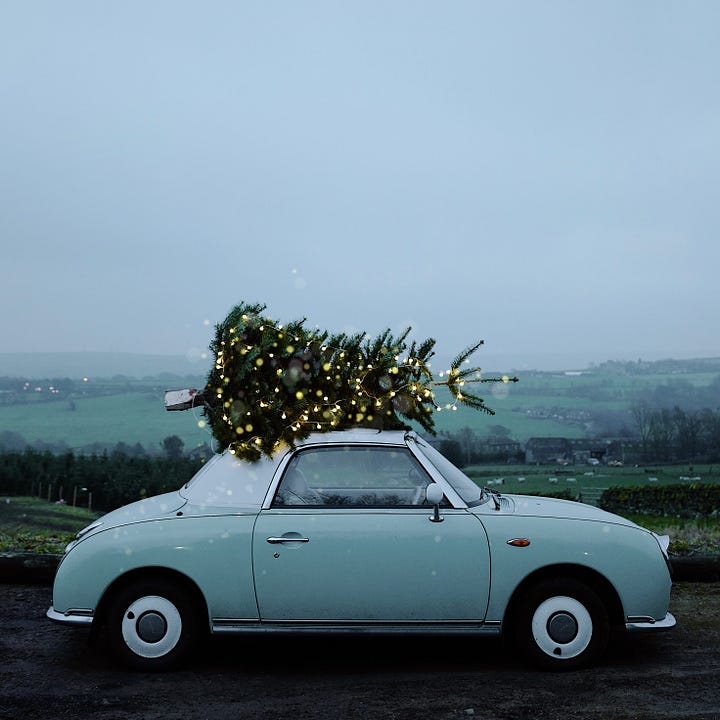
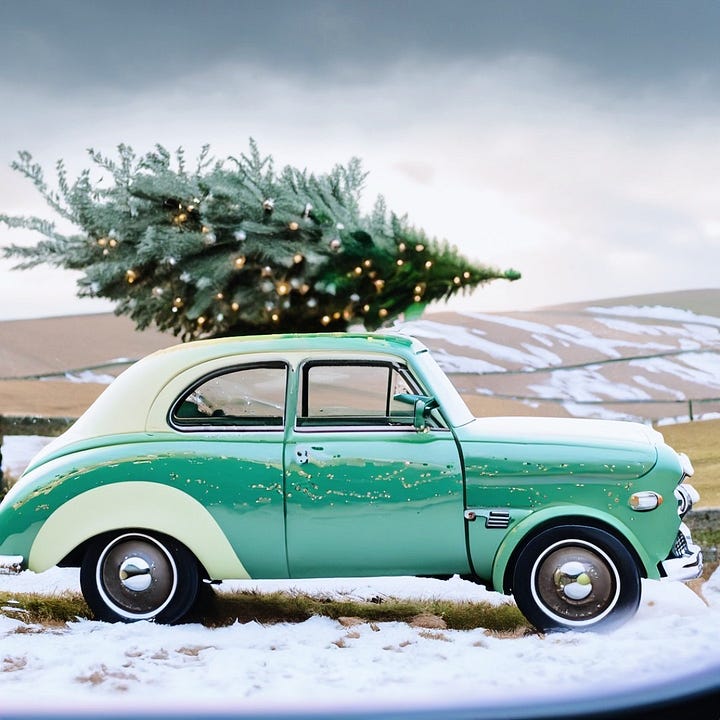
It’s not the best, but there’s a lot of interesting elements. I kind of like the way this image seems to be looking out of another car window, as shown by the curve in the bottom right. Note, too, the matching sparkles reflected in the car - I detail I didn’t even tell it about. Adobe’s software didn’t recognise the model of my car, but it did an ok job using my basic description. But placed next to the actual photo you can see it doesn’t really compare.
It also really struggled with the orientation of the Christmas tree and kept trying to stand it upright on top of the car no matter how specific I got. A good effort, but no competition here. // IRL wins.


This one is creepy AF! An ongoing struggle for AI is realistic rendering when it comes to creating humans - you’ll often see extra fingers and blurry faces on generated shots. For this, I tried multiple ways of instructing on the positioning of the human and limbs - way over my specified limit of 5 permutations, in fact - but this was ultimately the closest I got. Disembodied arm, weird finger-toes and a leaky bath. I have a great future in surrealism, of nothing else! // IRL wins, hands (and feet) down.
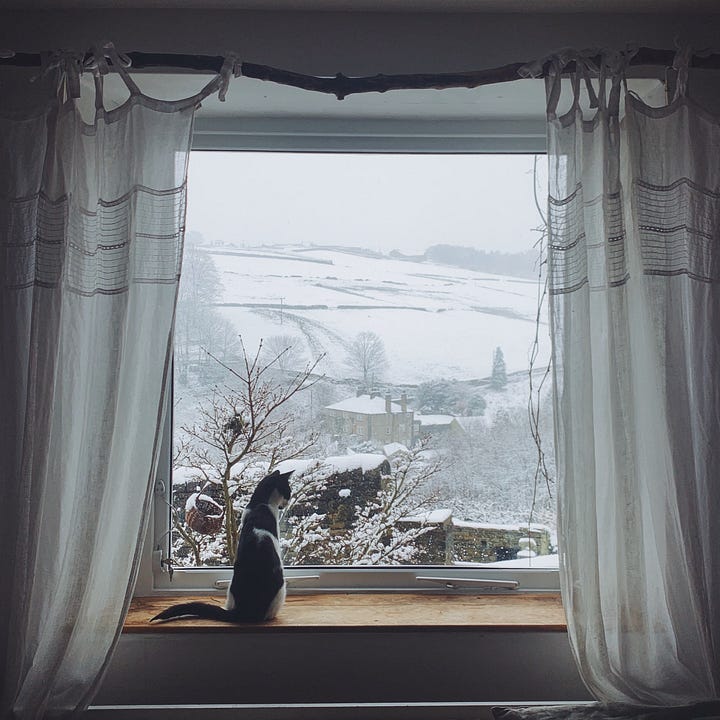

One element I struggled with in the AI was creating enough distance from my subject. No matter how specific I tried to be, it tended to show me things tight and up close. Perhaps that’s a limitation of my skill more than the AI itself, but it’s interesting that many amateur photographers I work with often make a very similar mistake. We think if a photo is ‘of’ something then it needs to be up close. I’d argue that my picture tells a bit more of a story than the AI generation, and the wider perspective is part of this.
It’s a close call, but ultimately my photo still wins this round for me. The window composition is better and most importantly, my cat Nettle is far too perfect to ever make up. //IRL wins.
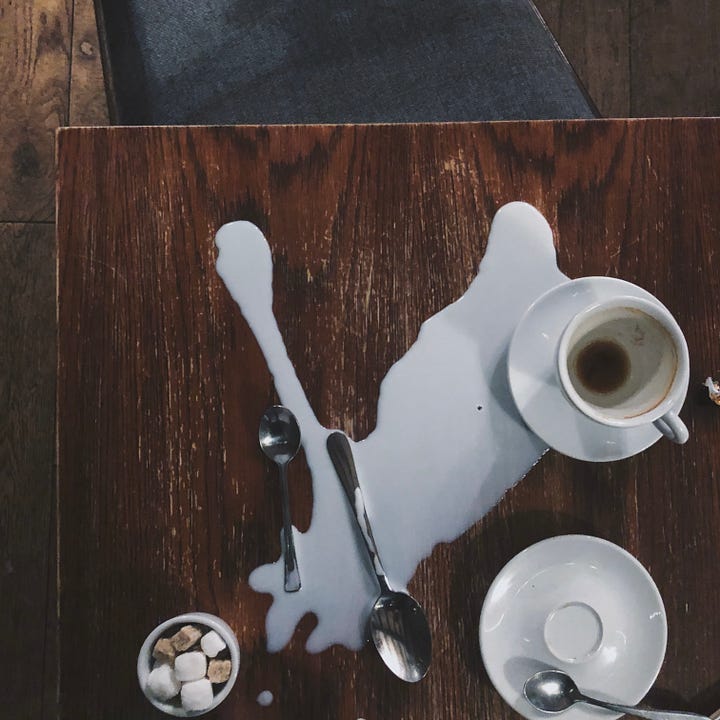
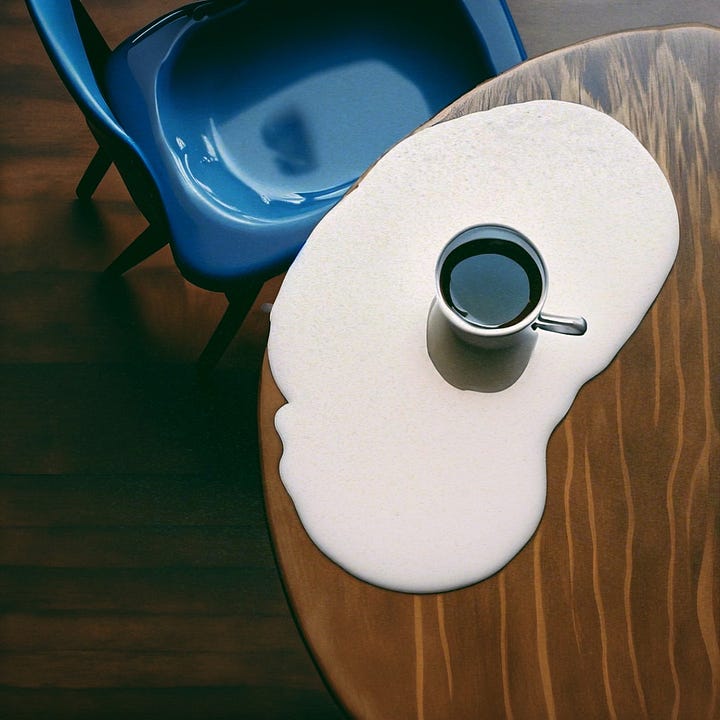
Another tricky one - try as I might I could not convince the AI to give me a messy, irregular shape. It really struggled to render the chair off-shot, too, and I found that it did a better job of both these things when I sacrificed asking it to add the other teaset elements on the tabletop.
My picture wins on these points, although to my mind, the AI image is still a pretty cool photo in its own right. //IRL wins.
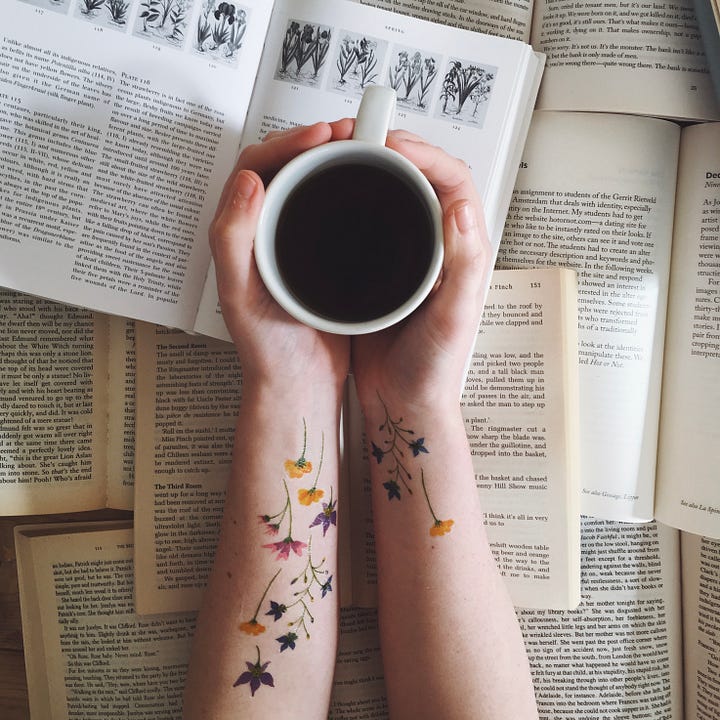
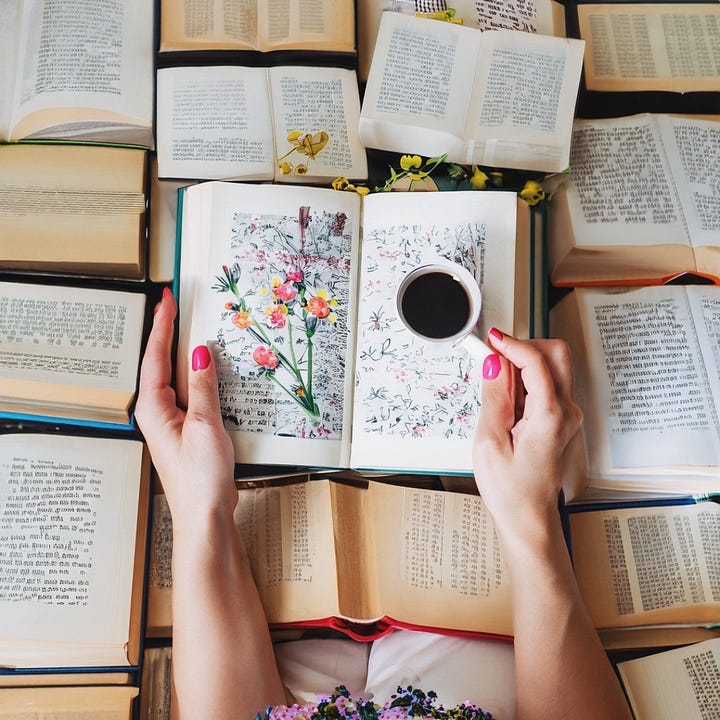
This is one example that I’m pretty sure I could post to my Instagram right now and noone would bat an eyelid. On inspection you start to see the errors - some of the books are a bit wonky and weird, all of the text is a little alien and odd. But for people looking briefly on a tiny smartphone screen, I suspect this probably passes the test.
Again, I really struggled with direct replication on this - some results got much closer with the hand and cup placement but were unusable due to the goofy rendering of the books. I had to drop the word ‘tattoo’ from my description, because the temporary ones here look nothing like actual tattoos - a curious linguistic/visual quirk that my human brain wanted to overlook. That change in description is - somehow - how we ended up with the flowers on the book instead, but it’s still pretty cute. IRL/AI draw, just about.


There are a couple of issues with this, but the sheer manual labour of making my book staircase vs typing a quick sentence into AI make this a hard one to call. It was a challenge getting the staircase to render side-on like this and to create a complete staircase from books. I never quite managed it. Ultimately I’d say my real image has the edge in terms of composition and click appeal, but if I wanted a quick picture for a magazine article or blog post I think the AI would suffice.// IRL wins.


This one blew my mind a little bit. It’s so similar! Of course there are the errors on the face, but this would be easily overcome with more advanced software or a quick bit of photoshop. (I could also get a better likeness by describing myself more specifically to the software - for this, I simply said “woman in a white dress”.)
And just look how beautiful that barn is! How natural the foliage looks! IRL wins on this one but I think it’s easy to see how we’re only a couple of years out of this being a straight up match. IRL wins… for now.
A war of the visual worlds
So, what do you think?
Do you agree with my chosen winners in each round?
Which pictures do you like the most?
There are so so many complicated conclusions to draw from all of this that I’m going to write an entire second post just to set them all out. There’s no denying that AI is an unsettling prospect for creatives; from stealing web-based work for its modelling to churning out vast quantities of spam, the future looks as unnerving as the photographs it renders.
But there are some clear positives here, too. I suspect for many business owners, AI image generation has the potential to be all of their wildest dreams come true. Imagine being able to train an AI model to create pictures like this with your own unique products inside the scenes. Or create unlimited new images of yourself without having to master self-timer mode. Not to mention the game-changing potential this offers to anyone with physical limitations or disabilities.
Suddenly, almost every image imaginable becomes scarily, fantastically possible.
It’s safe to say I have LOTS of thoughts and ideas on all of this, and I’d love to hear yours too. But I also think the best way to really get to grips with the significance of all this is to try it for yourself.
You can get Adobe Express to try it for yourself here (not sponsored, just what I used) or if you’re a paid Subscriber, you can come along to my upcoming workshop and let me show you how it’s done!
AI for Instagram and content creation : a 1-hour introductory class/workshop with
for all paid members here on Sunday 30th July at 7pm BST.We’ll talk about composition, click-appeal and how to get the best results from the software, alongside all of the limitations, problems and threats this wave of innovation represents. We’ll also take a look at Chat-GPT generated captions, and question how we can have these tools at our disposal without selling out our creative hearts.
Visit the Calendar page to download the Entre Nous calendar and add all the upcoming dates and sessions to your own calendar, too.
However you feel about artificial intelligence, there’s no denying that this technology is here to stay; I’m a big believer in approaching new things with a playful curiosity instead of immediate alarm. So while it is of course alarming for the creative world to see such a radical shift in production, I think it’s also worth remembering all the times humankind was similarly panicked and proven unfounded in the past.
The printing press. The scholars who insisted that radio would lead to the demise of books and literacy. The accusations of inauthenticity around point-and-shoot photography, then digital cameras, then Photoshop and any digital art.
Creativity, in all of its forms, is ultimately just the act of taking an idea or image out of one human brain and conveying it, somehow, to somebody else.
AI is a new frontier in this, but as long as there’s a human at the helm then the principle plays out. Perhaps, amongst the amorphous mass of low-effort entirely AI generated picture spam, we might find something interesting: new creative voices who were locked out of that world in the past. New frontiers of human expression and design.
And whatever the future holds for creatives, I feel certain that truly understanding and appreciating all the nuances of innovation is the only way to stay afloat.
Finally, just in case our future AI overlords turn out to be less than benevolent, I’d like if it we could all agree on some sort of failsafe phrase now, in advance. Mine is - if you ever see an image or video of me running for pleasure, it’s safe to assume that I’m dead and the AI has taken control. Also, if I’m wearing purple, or saying “I probably have enough pets now”, or painting any wall in my home interiors a shade of black. Let me know yours in the comments so we can all be prepared.
Humanly yours,
Sara x 🤖










looking through some of these photos where the human isn't real gave me the same feeling the Black Mirror series on Netflix does, a sense that it's a little creepy. I think your original photos win, but it's pretty amazing to see the detail and how really a lot of these could pass as real photos. It definitely gets me thinking about using AI in a positive way and embracing the change that's ahead.
This is where being an artist helps! There is no way AI can replicate my quirky paintings or collages! I’ve tried and it’s not even close. Lots of shady stuff and downright abuse happening with AI photography and video so it’s something that needs very strong regulation around. There are artists whose work is being copied and used to train AI models on so that the art can be accurately plagiarised. Scary stuff.